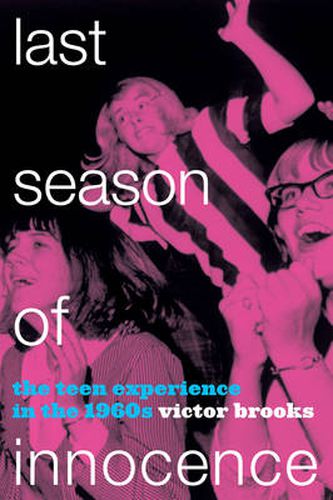Readings Newsletter
Become a Readings Member to make your shopping experience even easier.
Sign in or sign up for free!
You’re not far away from qualifying for FREE standard shipping within Australia
You’ve qualified for FREE standard shipping within Australia
The cart is loading…






Last Season of Innocence discusses the lives of the preteens and teenagers who were in junior high school, high school, and the first year of college in the 1960s. These are the young people who read Seventeen and Mad, watched more television than their older siblings, and tended to listen to 45 rpm singles or mono LPs rather than the more sophisticated stereo albums of their older siblings. Substantial numbers of these teens could and did join political protests, but they also engaged in a more personal daily struggle with school dress codes and parental intrusion on social life. In a nation where a third of the population was under nineteen, they were hardly invisible, but their experience seems to have been marginalized by the twenty-somethings who largely redefined the meaning of the youth culture and took center stage in doing so. Brooks offers a unique account of the much-chronicled 1960s by examining the experiences of these preteens and teenagers.
$9.00 standard shipping within Australia
FREE standard shipping within Australia for orders over $100.00
Express & International shipping calculated at checkout
Last Season of Innocence discusses the lives of the preteens and teenagers who were in junior high school, high school, and the first year of college in the 1960s. These are the young people who read Seventeen and Mad, watched more television than their older siblings, and tended to listen to 45 rpm singles or mono LPs rather than the more sophisticated stereo albums of their older siblings. Substantial numbers of these teens could and did join political protests, but they also engaged in a more personal daily struggle with school dress codes and parental intrusion on social life. In a nation where a third of the population was under nineteen, they were hardly invisible, but their experience seems to have been marginalized by the twenty-somethings who largely redefined the meaning of the youth culture and took center stage in doing so. Brooks offers a unique account of the much-chronicled 1960s by examining the experiences of these preteens and teenagers.